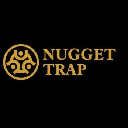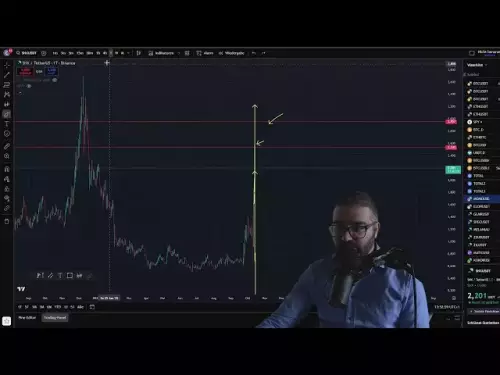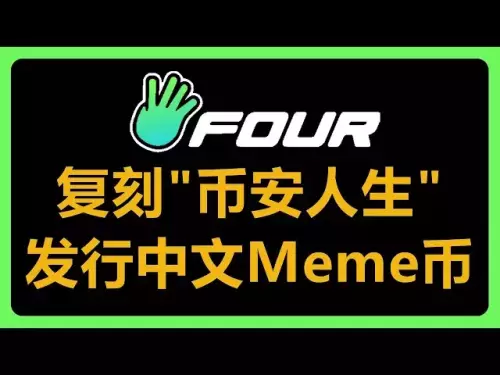 |
|
 |
|
 |
|
 |
|
 |
|
 |
|
 |
|
 |
|
 |
|
 |
|
 |
|
 |
|
 |
|
 |
|
 |
|
Cryptocurrency News Articles
XRPL, GCUL, and Blockchain: A New Era of Institutional Finance?
Oct 09, 2025 at 05:29 pm
Exploring the intersection of XRPL, GCUL, and blockchain tech, focusing on institutional adoption, privacy innovations, and the evolving landscape of digital finance.

XRPL, GCUL, and Blockchain: A New Era of Institutional Finance?
The blockchain landscape is heating up! With Google's GCUL entering the arena and Ripple's XRPL pushing for privacy-first innovations, the race for institutional adoption is on. Let's dive into the key developments and what they mean for the future of digital finance.
GCUL: Google's Foray into Enterprise Blockchain
Google's GCUL (Google Cloud Universal Ledger) is a new layer-1 network aimed at payment providers and financial institutions. Operating on Python-fueled smart contracts, GCUL offers a permissioned, private network designed to comply with regulatory requirements. This contrasts with public blockchains like XRPL, which are decentralized and open to everyone.
XRPL vs. GCUL: Key Differences
While both platforms aim to facilitate efficient transactions, their approaches differ significantly. XRPL is decentralized, allowing anyone to validate transactions. GCUL, on the other hand, prioritizes institutional control, stability, and regulatory compliance. GCUL charges fixed monthly fees, avoiding cryptocurrency involvement, while XRPL uses XRP as its native token for transactions.
XRPL: Prioritizing Privacy for Institutional Adoption
Ripple's XRPL is making strides in privacy-first innovations to attract institutional clients. J. Ayo Akinyele, a Ripple cryptographer, emphasizes the importance of combining transparency with confidentiality. Zero-knowledge proofs (ZKPs) are a key component, enabling private but law-abiding transactions. This focus on privacy aims to bridge the gap between public ledgers and regulatory requirements.
The Rise of Confidential MPTs
The introduction of Confidential Multi-Purpose Tokens (MPTs) on XRPL in 2026 will bring privacy-preserving tokenized collateral to the market. This is a crucial step for institutional adoption of DeFi and tokenized real-world assets (RWAs). XRPL Version 3.0, with its protocol-level lending system, further solidifies XRPL's position in institutional finance.
dYdX and the Broader DeFi Landscape
The dYdX Foundation's presence at the Blockchain Life 2025 conference in Dubai highlights the growing importance of decentralized finance. High-profile events like these can influence market trends and trading strategies. dYdX, a leading player in decentralized perpetual trading, continues to innovate in layer-2 scaling and perpetual contracts, attracting institutional flows.
Trading Opportunities and Market Sentiment
Events like Blockchain Life offer networking and insights that can impact the DYDX ecosystem. Historically, DeFi projects have seen trading volume spikes post-conference. Monitoring DYDX/USDT pairs and broader market indicators like Bitcoin dominance can provide valuable trading opportunities.
My Take: The Future is Hybrid
It seems clear that the future of blockchain for finance isn't about one chain to rule them all. Instead, we're likely heading towards a hybrid model. Institutions may gravitate towards permissioned chains like GCUL for regulatory reasons, while others might prefer the flexibility and lower costs of decentralized options like XRPL. The key will be interoperability and the ability to seamlessly move assets between these different ecosystems. I think we'll see an increase in cross-chain solutions as the space matures. It's also exciting to see the focus on privacy, especially with the innovations coming to XRPL. This is a critical step for attracting larger institutions and unlocking the full potential of DeFi.
Bottom Line
The blockchain space is rapidly evolving, with Google's GCUL and Ripple's XRPL leading the charge. Whether you're an institutional investor or a crypto enthusiast, staying informed about these developments is crucial. So buckle up, folks! The ride's just getting started, and who knows? Maybe one day we'll all be using blockchain to buy our morning coffee. Cheers to that!
Disclaimer:info@kdj.com
The information provided is not trading advice. kdj.com does not assume any responsibility for any investments made based on the information provided in this article. Cryptocurrencies are highly volatile and it is highly recommended that you invest with caution after thorough research!
If you believe that the content used on this website infringes your copyright, please contact us immediately (info@kdj.com) and we will delete it promptly.
-

-

-

-

- Decoding Crypto Trends: Bittensor's Bull Run, Cardano's Dip, and LivLive's Presale Buzz in 'Uptober 2025'
- Oct 11, 2025 at 09:01 am
- Analyzing the latest crypto market moves: Bittensor's surge, Cardano's potential pullback, Aurelion's gold-backed treasury, Solana's transaction dip, and LivLive's presale allure. Your guide to navigating crypto trends.
-

-

-

-

-































































